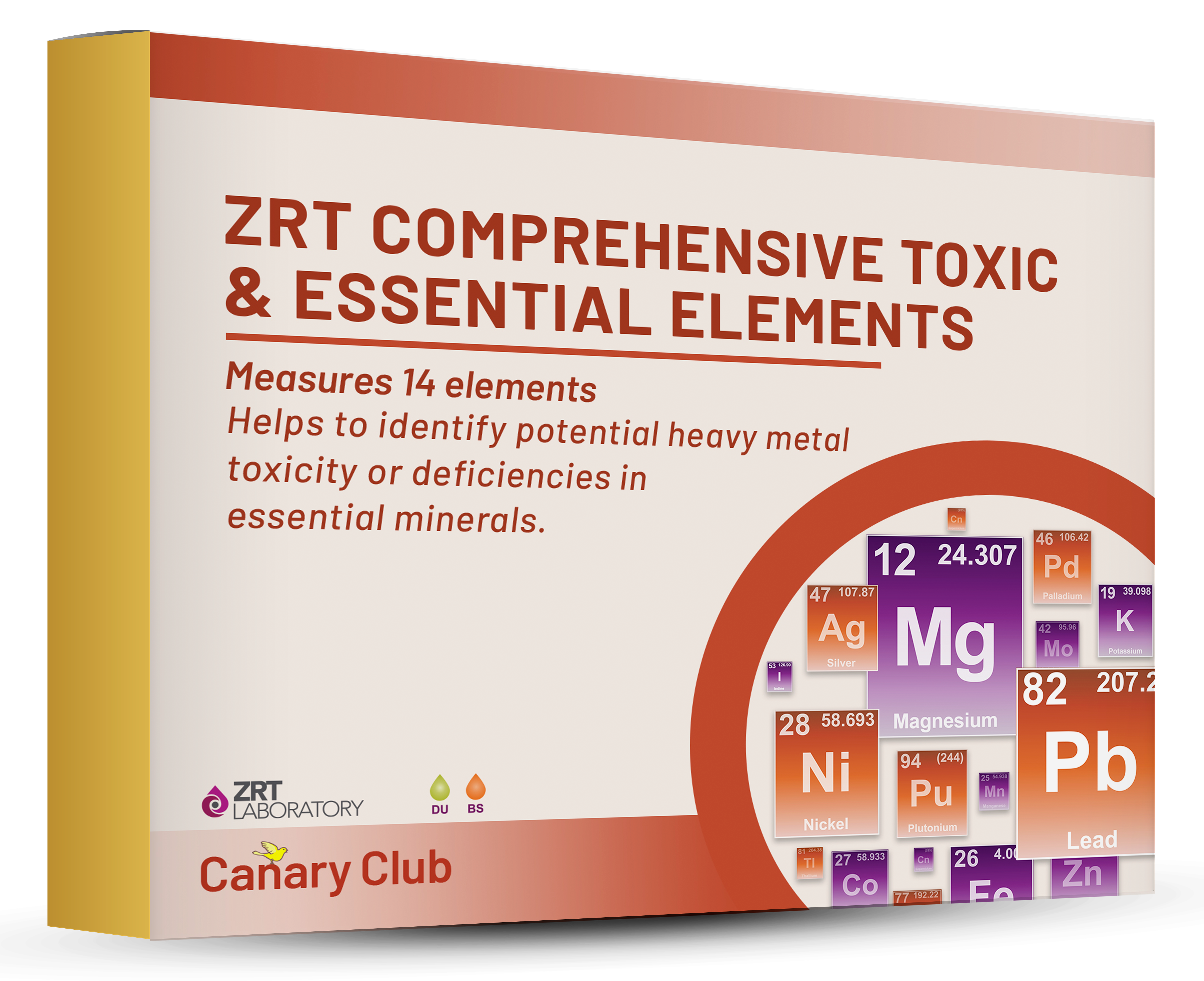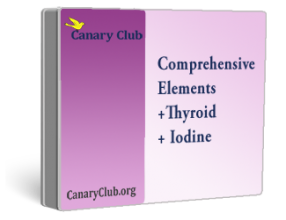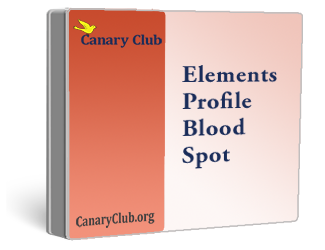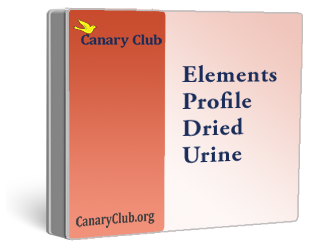The Lurking Threat
When you hear the words “toxic chemicals”, chances are good they conjure specific images. Perhaps you remember the town of Hinkley, California, poisoned by PG&E’s chemical leeching pools1. Or maybe you think about oil spills, like the Deepwater Horizon disaster in the Gulf of Mexico2. Those certainly qualify, but the truth is that toxic chemicals are all around us, every day.
They’re in the foods we eat, the water we drink, and even in the surfaces that we touch. These toxic chemicals, are known by many names. Heavy metals like lead and mercury are familiar names, and the not quite so every day names of per- and polyfluoroalkyl substances (PFAS), are a persistent, ever-present threat to your health, as well as that of your children.
You can test for levels of many of these toxins in your body through several of our available test profiles for Heavy Metals and Essential Elements.
Pervasive Chemicals & Toxic Metals
During their manufacture and use, chemicals are released into the environment.
"They can travel vast distances by air or water and are absorbed by wildlife and humans through the skin or ingested in food and water…Hazardous man-made chemicals have contaminated every environment…and up to 300 man-made chemicals have been found in humans.”3
What’s more, climate change is accelerating the spread and absorption of toxic chemicals. Higher temperatures increase off-gassing, allow certain chemicals to vaporize more easily, and help those chemicals travel farther in the environment.
By now, most of us are familiar with BPA and its incredibly damaging role in the human body. We’re aware that other chemicals have similarly profound impacts, too. But what about other risks – mercury and lead, for instance? Here in the West, we’ve taken steps to eliminate sources of mercury, lead, and other heavy metals from our lives, so we should be safe, right? Wrong.
Even though mercury is rarely used any longer in many consumer products, both of those heavy metals are present in our environments, even in our homes. That’s not all – other heavy metals can also lurk within the familiar and safe, such as arsenic, zinc, chromium, aluminum, and more. You’ll find them in your toothpaste, your lipstick and eyeliner, and even hidden in sunscreens and eye drop formulations.
Digging deeper here, you’ll find toxins like cadmium, uranium, methyl mercury, and more. They’re found in things like car batteries, vehicle exhaust, fertilizers, degreasers, cigarette smoke, coal and coal smoke, and so many other sources.
Toxic Chemicals and Dangerous Nutritional Elements
- Arsenic: Can come from groundwater, and is found in soil. It can be released through mining and ore smelting, and also can be found in fish and shellfish.
- Cadmium: Used in batteries, it can leach into the environment, including the soil and groundwater. Exposure can also come from plastics, solar panels, and more.
- Lead: Can be found in paint, as well as lead-containing dust. Homes built prior to 1978 in the United States are likely to contain lead-based paints.
- Mercury: The most common source of mercury comes from fish, but exposure can also stem from broken products that contain mercury, such as thermometers and fluorescent lights.
- Zinc: Is an important dietary element and can be found in meat, fish, poultry, eggs, dairy, and many legumes. Excessive consumption can lead to toxic build-up.
- Copper: Trace copper comes from your food, but it can also be found in water supplies. High levels of copper can lead to toxicity.
- Magnesium: Comes from leafy greens, but also from dairy, fish, and other foods. It can also be added to foods and may build up in the body over time, leading to toxicity.
- Selenium: Is another trace element important for life. It can be found in soil and rocks, but also in cigarette smoke and other sources. Selenium can build up to toxic levels in the body.
- Iodine: Is crucial for life and vital for a fully-functional thyroid. It is found in seafood and some shellfish, as well as dairy products and even iodized salt. Too much iodine (or too little) can cause serious repercussions.
- Bromine: Is used in many cleaning products, but can also contaminate foods and the air. Bromine build-up can cause problems processing iodine and lead to low thyroid function.
- Lithium: Is important for life, and is also used in battery production. Toxicity can occur through exposure can lead to fluid in the lungs.
- Creatine: Can be found in most meat, poultry, and fish, as well as supplements. The body also naturally produces creatine, but in high doses, it can affect thyroid function, leading to weight gain.
The challenge is determining current levels of heavy metals and nutritional elements in the body. Waiting for symptoms to appear could be too late to take corrective action. The only solution is to test (blood and urine) regularly.
Many heavy metals and built-up nutritional elements affect thyroid function, causing either hypo or hyperthyroidism. Measuring thyroid function requires an accurate gauge of specific hormone levels, including the following:
- Thyroid-Stimulating Hormone (TSH)
- Free Triiodothyronine 4 (fT4)
- Thyroid Peroxidase (TPO)
- Free Triiodothyronine 3 (fT3)
- Thyroglobulin
- Total Thyroxine (T4)
Testing thyroid hormones in conjunction with assessing heavy metals and the level of nutritional elements in the body helps ensure you can safeguard your health and that of your family.
Those Most at Risk
While everyone is susceptible to damage from exposure to toxins and heavy metals, some are at a higher risk than others. According to a study published through the US federal government’s Heath Affairs website, “children are far more sensitive than adults to toxic chemicals in the environment”4.
Further studies found that this sensitivity extended beyond infancy through adolescence. What’s more, pregnant and nursing mothers were also at greater risk themselves, as well as for passing chemicals and heavy metals on to their children either in utero or through breast milk.
A study published in the journal Environmental Health Perspectives5 found that “Lead, mercury, arsenic, cadmium, and other potentially toxic metals that are dispersed throughout the environment also have bioaccumulative features and thus are of concern to the nursing infant.”
While there is no way to completely eliminate the chance of exposure to toxins in your life, there are ways to dramatically reduce the amount of exposure to yourself and your family. Awareness is the first step – simply understanding that the problem exists allows you to take the next step, which is action.
What action, though? You can (and should) take several different steps to help safeguard your health and that of your children.
Test to Establish a Baseline and Identify Current Toxins
Without knowing the current level of toxins built up within the body, it is impossible to take informed action. It follows that the first step in mitigating the impact of toxic chemicals and heavy metals on your health and that of your family is to test for their presence and identify levels.
 Comprehensive Toxic & Essential Elements Profile
Comprehensive Toxic & Essential Elements Profile
At-home touchless testing offers the ability to measure four of the most commonly found heavy metals in your environment, which are mercury, lead, arsenic, and cadmium. In addition, the test also identifies minerals and other elements that, while vital for life, can become toxic in high quantities, such as iodine, selenium, zinc, and lithium to name just a few. However, note that this test does not gauge thyroid hormones.
 Comprehensive Elements + Thyroid + Iodine
Comprehensive Elements + Thyroid + Iodine
Thyroid disorders can lead to problems ranging from weight gain to autoimmune disease. Moreover, thyroid hormone levels can be affected by diet, lifestyle, exposure to toxic chemicals and heavy metals, and many other factors. Iodine can also be problematic if it is not present in the right concentrations, and low or high levels can lead to negative health impacts. This test assesses the level of heavy metals, thyroid function/hormone levels, and iodine levels.
Toxic Elements can increase the risk of developing conditions like diabetes and cancer. Heavy metals and essential elements affect different systems of the body, so it makes sense not to measure all in the same body fluid. Tests for Selenium, Magnesium, Copper, Zinc, Cadmium, Lead, and Mercury.
Bromine and Lithium while shown to play a positive role in health can also be potentially dangerous and excessive levels.
Tests Iodine, Bromine, Selenium, Lithium, Arsenic, Cadmium, Mercury
Your Health Testing Plan
It’s time to protect yourself and your family from the dangers of heavy metals and toxic chemicals lurking in seemingly innocent products.
- Step 1: Choose one of the two tests discussed previously.
- Step 2: Take the test and determine the current level of heavy metals and toxins in your system.
- Consider working with a health professional to help you understand the test results and create a mitigation plan.
- Step 3: Create a cohesive mitigation plan that helps you and your family limit exposure to toxic chemicals and heavy metals.
- Step 4: Monitor your levels over time.
- Step 5: Adjust your daily routine, your diet, and your lifestyle to further prevent exposure to these threats.
Source:
- Deepwater horizon – BP Gulf of Mexico oil spill. (2020, December 04). Retrieved February 22, 2021, from https://www.epa.gov/enforcement/deepwater-horizon-bp-gulf-mexico-oil-spill
- Genecov, M. (2020, September 04). The 'Erin Brockovich' town is still toxic (and nearly abandoned). Retrieved February 22, 2021, from https://grist.org/science/the-true-story-of-the-town-behind-erin-brockovich/
- Lead and other heavy metals. (n.d.). Retrieved February 22, 2021, from https://www.safecosmetics.org/get-the-facts/chemicals-of-concern/lead-and-other-heavy-metals/
- Mead, M. (2008, October). Contaminants in human milk: Weighing the risks against the benefits of breastfeeding. Retrieved February 22, 2021, from https://www.ncbi.nlm.nih.gov/pmc/articles/PMC2569122/
- Philip J. Landrigan and Lynn R. Goldman. (2011, May 01). Children's vulnerability to toxic chemicals: A challenge and opportunity to strengthen health and environmental policy: Health affairs journal. Retrieved February 22, 2021, from https://www.healthaffairs.org/doi/10.1377/hlthaff.2011.0151
- https://fullscript.com/blog/environmental-toxins-and-your-health
- The toxic Twelve chemicals and contaminants in cosmetics. (n.d.). Retrieved February 22, 2021, from https://www.ewg.org/californiacosmetics/toxic12


 Elements Profile Blood Spot
Elements Profile Blood Spot
